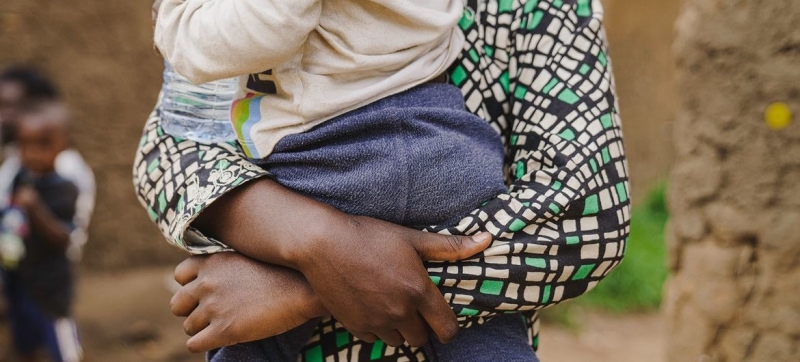- C.A. Yunus expresses concern, sympathy over Korail slum fire |
- UNAIDS Warns of Deepest HIV Response Setback in Decades |
- UN Warns of Rising Femicide and Escalating Digital Abuse |
- Over 600m Children Exposed to Violence at Home: UNICEF |
- Dhaka updates noise pollution rules to curb rising sound levels |
Over 600m Children Exposed to Violence at Home: UNICEF

A young mother in the DR Congo, who was raped, holds her 18-month-old baby.
More than one in four children globally — around 610 million — live with mothers who have experienced physical, emotional, or sexual abuse by an intimate partner in the past year, making violence a part of their everyday lives, according to new data released by the UN Children’s Fund (UNICEF) on Tuesday.
Children’s exposure to intimate partner violence is highest in Oceania, sub-Saharan Africa, and Central and Southern Asia, reflecting deep regional inequalities and widespread patterns of abuse experienced by women worldwide.
“Today, millions of women and children are living in homes where violence is a part of regular life,” said UNICEF Executive Director Catherine Russell. “Women’s safety and autonomy are paramount to children’s well-being.”
A human rights violation
The analysis comes in the wake of updated UN global estimates on violence against women, published by the World Health Organization (WHO) on behalf of the UN Violence Against Women Inter-Agency Working Group.
These estimates show that more than one in 10 adolescent girls and women aged 15 and older have experienced physical or sexual violence from an intimate partner in the past 12 months.
Violence against women — particularly intimate partner violence and sexual violence — is a major public and clinical health issue and a violation of women’s human rights. It is rooted in, and perpetuates, gender inequalities.
Globally, one in three women experiences physical and/or sexual violence in her lifetime, mostly by an intimate partner — a stark reminder of the scale of gender inequality and discrimination against women.
Where women and children are most at risk
For the first time, UNICEF’s regional data highlights where women and children are most at risk.
In Oceania, just over half of all children — around three million — live with a mother who has recently experienced intimate partner violence. Sub-Saharan Africa follows at 32 per cent, affecting 187 million children. Central and Southern Asia, while slightly lower at 29 per cent, accounts for the largest number globally, with 201 million affected children.
Other regional findings include:
• Northern Africa and Western Asia: 26 per cent, or 52 million children
• Eastern and South-Eastern Asia: 21 per cent, or 105 million children
• Latin America and the Caribbean: 19 per cent, or 35 million children
• Europe and Northern America: 13 per cent, or 28 million children
• Australia and New Zealand: 5 per cent, or approximately 400,000 children
Long-term consequences
Children living in homes where their mothers experience violence are at heightened risk of both direct and indirect harm, UNICEF warned.
Even if they are not physically abused themselves, witnessing violence can erode trust between children and caregivers, leave deep emotional scars, and cause trauma that often persists into adulthood.
Exposure to intimate partner violence also increases the likelihood that children will experience or perpetuate violence later in life, with long-term consequences for their safety, development, health, and education.
UNICEF is urging governments to take stronger action, calling for integrated strategies that address violence against both women and children, supported by women- and girl-led organisations.
It emphasises the need for wider access to survivor-centred services, greater investment in prevention — including parenting and school-based programmes — and efforts to challenge harmful social norms while elevating the voices of survivors and young people.

